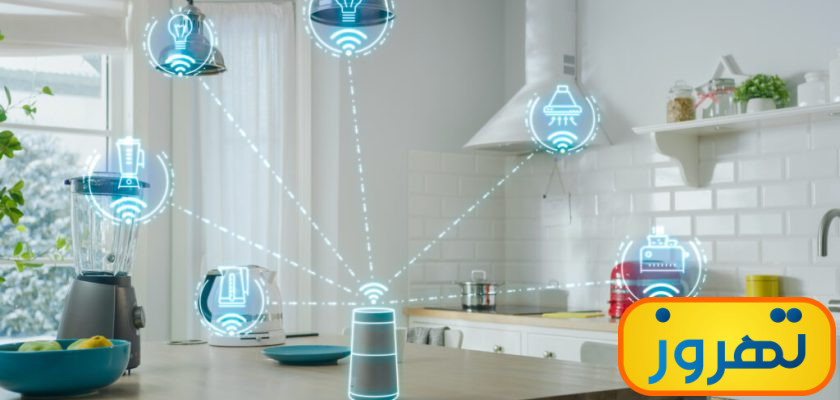Imagine your smart-tech life. Your smart alarm clock goes off half an hour earlier than usual. Your sleep cycle was comfortable; hence your sleep tracking bracelet decided to wake you up early. Your smart display checks your schedule and reminds you of the official presentation you need to work on. As soon as you head to the kitchen, your coffee maker already brewed your favorite cuppa. Each room is adequately lit as per your preferred brightness, depending on the time of the day. Your smart shower sprays water set at your preferred temperature, so you don’t need to tweak with the shower taps. Your smart washer dryer has already ironed your office apparel. As soon as you stand up from your breakfast table, your electric vehicle is fully charged and air-conditioned to a comfortable temperature. Most of these things are already available in the market.
A smart home is an innovative, more livable residential space with intelligent appliances and interconnected devices. Take the example of a typical CCTV surveillance setup for your home. Gone are the days when the high-end cameras needed mile-long cables, drilling, and data storage space. Now you can get yourself a smart camera and hook it to a power source, and you’re done. It connects to your home Wifi and stores all data on a secure remote server. It even alerts law enforcement in case of undesirable activity around your house.
The appliances and devices can connect with each other, which makes a home actually smart. The technology that makes it happen is called IoT (Internet of Things). The things you use daily within your home can be programmed to perform their jobs in a synchronized manner. As things talk to each other two-way, their activities can be monitored and controlled through smartphones or smart speakers.
Having a smart home has its advantages. They include:
- Convenience – Smart houses are unquestionably more practical than traditional dwellings. Whether it’s turning up the temperature before you get home in the evenings or syncing media devices in different areas, you can automate all commands to your liking.
- Energy savings – Smart homes help you save energy in two ways. To begin, you may configure temperature and lighting controls based on your preferences. Smart appliances may also avoid consuming energy during high-demand periods. This is through responding to signals from utility providers, according to SmartGrid.gov.
- Safety – You can remotely monitor advanced wireless smart home security systems and home surveillance systems with a range of cameras, motion sensors, and other advanced features.
- Accessibility – Smart homes can come equipped with accessibility features such as voice-command systems to lock outside doors, control lights, and even run a computer. This versatility makes them a desirable option for disabled or elderly persons.
- Increased home value – A home with smart features is more likely to sell for a greater price.
- Insurance incentives – A st home will always carry the lowest insurance premiums.
You do not really have to get all smart devices and appliances available in the market. These items can be chosen as per the lifestyle of your family.
How to get started with your Smart Home setup
Most options available in the market have either their own apps or belong to a particular ecosystem. The apps act as the device’s gateway to establish connectivity with devices in their vicinity. Your choice may seem harsh with a plethora of devices. We recommend initiating your smart home plan with one or two smart devices. Get familiar with their work and then go on adding more smart products.
Browse different product categories and then narrow down the choice by picking the most convenient features you want in the device. Such a device could be a smart speaker, intelligent CCTV camera, or perhaps an intelligent door-lock. And then go on adding more devices to the range with smart lights, CO detectors, water sensors, etc.
Choosing Smart Home Ecosystems
Perhaps you should pick your digital assistant first. After all, it is the center of your smart home ecosystem. And it should seamlessly connect with all your devices. So the next time you are out to buy a smart appliance or a device, you should check its compatibility with your digital assistant.
Some of the most prominent digital assistants (no particular order) are listed as follows:
Google Assistant
Google already has its popular smartphone operating system Android OS working in more than 1.5 billion devices worldwide. Almost all of these smartphones have Google Assistant already available in them. And it is the most intelligent assistant in the pack. You can already get weather updates, news, play music, get map directions, and do many other things using the assistant.
Google has its own range of Nest branded devices that are fully compatible with its assistant. These include thermostats, Cameras, doorbells, smart displays, smart wifi, etc. For devices that are not directly compatible, Google provides an alternate way to sync and control them.
Apple Homekit
Apple owns iOS, the second most popular mobile operating system. Apart from their own range of smart speakers, Apple has been working to increase the choice of devices compatible with their Apple Homekit. It tries to bring different smart home apps to your phone. They may or may not sync with one another.
Amazon Alexa
Amazon seems to be going all-in with its ever-increasing range of Alexa-compatible devices in the market. They have their own Alexa branded devices like smart speakers (Eacho and Echo Show) as well as devices that have Alexa built-in.
Products like Philips Hue range of smart bulbs, Wemo smart plugs and switches, Ecobee thermostats, and sensors, among others, are already Alexa compatible. You will quickly come across several digital devices and appliances that carry the “Works with Amazon Alexa” branding on the packaging.


